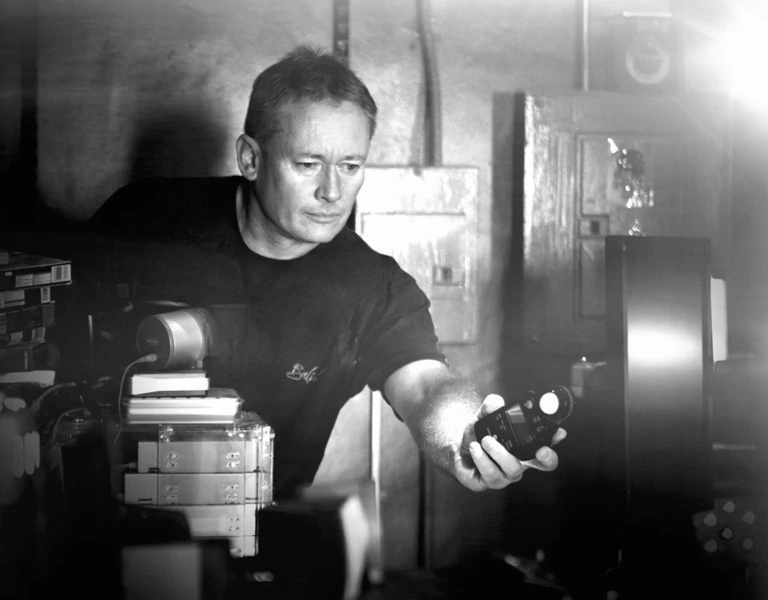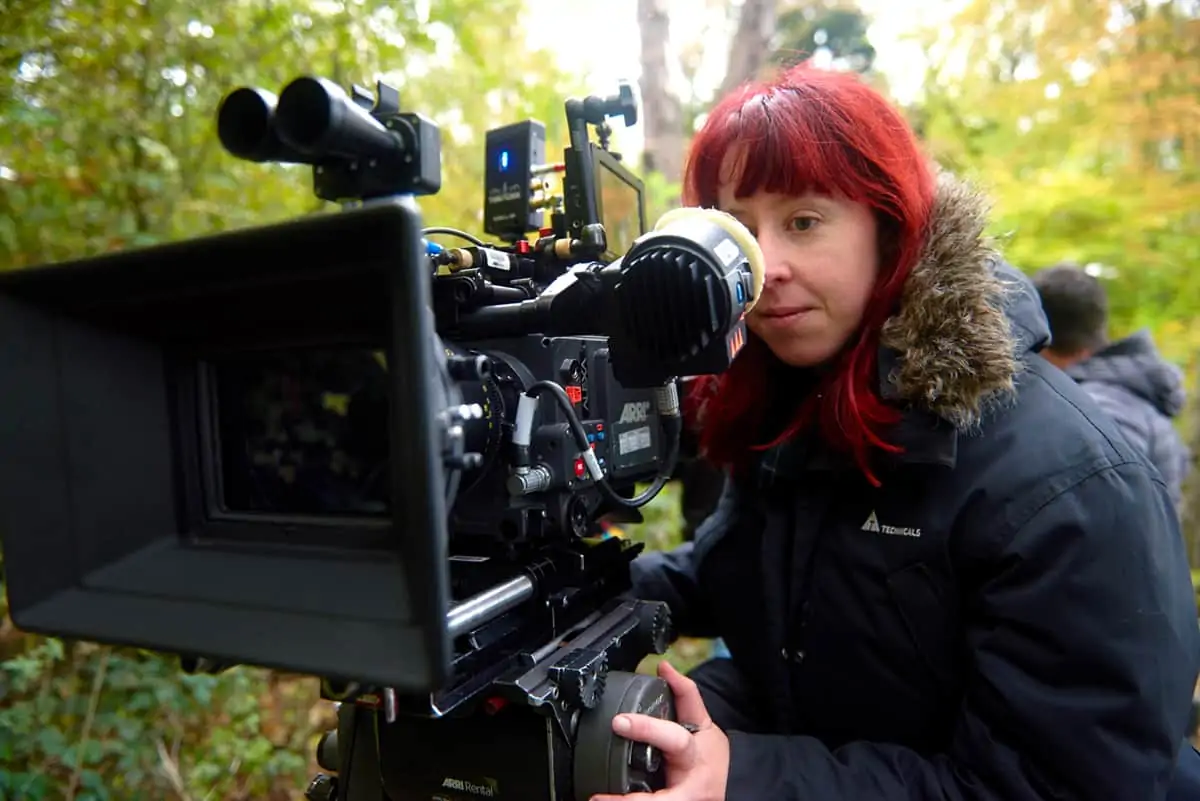Wealth and Decadence
Simon Duggan ACS / The Great Gatsby

Wealth and Decadence
Simon Duggan ACS / The Great Gatsby
BY: Adrian Pennington
Simon Duggan ACS details how stereoscopic 3D was used to craft a greater connection with film's performances and storytelling for Baz Luhrmann's majestic The Great Gatsby. Article written by Adrian Pennington.
Filmed four times previously, notably in 1949 and 1974, F Scott Fitzgerald’s 1925 literary masterpiece The Great Gatsby is retold by Baz Luhrmann as a parable for our times. Starring Leonardo DiCaprio, Tobey Maguire and Carey Mulligan it charts the lives and loves of an elite and the impact on them of sudden wealth, staged with the director's characteristically flamboyant visual style.
Speaking from the set during filming in late 2011, Luhrmann said he approached the adaptation, not “as a much-loved museum piece” but in the spirit in which Fitzgerald may have written the original, “as a piece in an age full of new possibilities enabled by new ideas and new technologies.” Seen this way, he stressed, “shooting in 3D made perfect sense."
That sensibility also informed his choice of cinematographer. Simon Duggan, ACS (Australian Cinematographers Society) had previously lensed VFX-heavy action films such as Die Hard 4.0, I Robot and Knowing.
“Baz wanted Gatsby to have a sense of reality and modernity, of being present in the Jazz Age where everything felt new, technologically advanced and sophisticated,” reports Duggan, speaking to British Cinematographer from location and also this March in the final stages of the grade. “Visually, we created the opposite of an expected period treatment with scenically aged sets, static cameras, and classic lighting.”

Having convinced executive producer Barrie M Osborne and Warner Bros, that Gatsby should be a native 3D shoot, Luhrmann got the go-ahead in 2010. Red Epic cameras were chosen as they were at the time physically the smallest camera to fit the lightweight 3Ality TS5 rigs and of filming 120fps 2.35 5K.
“I'd used the Epics before and was very happy with the look and image quality,” says Duggan. “On set you can get very close to your desired look through colour temp, tint and exposure settings on the camera leaving your DIT to fine tune on Redcine and keep a general log of settings.”
By shooting 5K they got the maximum quality out of the sensor and then downsized to 2.5K for VFX. “Having the ability to go back to the 5K image meant Baz could do large blow-ups such as additional close ups from existing medium shots, or grab a tighter background plate for a keyed foreground when he required them.”
With no prior experience of stereoscopic filming, Duggan took an introductory course at the Sony 3D Technology Centre in Culver City to learn basic technical and creative aspects. “I then immersed myself into the world of 3D, so by the time I joined Baz for tests [at Bazmark's New York office] I had a pretty good understanding of the opportunities of the format,” he recalls.
Luhrmann's lab-style tests with a twin-lens camcorder conducted with key cast, in the autumn of 2010, helped him grasp a visual grammar that would capture a performance using stereo cameras.

Dial M For Murder, Alfred Hitchcock's 1954 3D suspense drama was screened as inspiration for Gatsby's creative quartet which included Duggan, stereographer Alonso Homs and production designer Catherine Martin.
“That film proved for me, how fundamentally different 3D is in terms of dramatic staging,” says Luhrmann, also an accomplished theatre director. “It has a force that is born quite simply from its ability to capture great actors playing against each other in a tight space and toward the camera, something like the theatre.”
According to Duggan: “Baz and I wanted the viewer to be in among the performances and to really feel an intimacy with the actors. Baz loved the similarities that 3D filming had to staging a theatrical performance where he could create depth by blocking actors and designing set pieces.”
That stereoscopy could be used to enhance performance and draw out the humanity of a character was the single biggest take away from the development stage. Broadly, the idea was to allow a character to feel excluded from the story world and by implication draw the audience closer (literally) to the emotion in the actor's performance by making subtle use of negative parallax.
Translating it into practice, when principal photography began at Fox Studios Australia and locations in and around Sydney, meant confronting key conventions of filmmaking notably, the over the shoulder shot for two-person dialogue and the close-up.
“In 3D there is nothing like being right in the face of the actor or close-up on a detail with a wide lens,” says Duggan. “A close-up with 3D volume and detail is incredible since it heightens the viewer’s access to the actor’s emotions. You can read the subtlest of expression and look straight into their eyes. It probably felt slightly invasive at the start but once the actors saw the results, they loved it.
“We really had little choice of what lenses to use with the more compact 3Ality rigs as we required a lens system with a smaller front diameter to enable us to use wide angles on the smaller mirror box such as the 16mm. We generally used from 16-21mm for our wide shots, 21-40mm for our medium shots and between 40-85mm for our tighter shots. Rarely did we go much longer as it starts to counter the effect of creating 3D depth as little stereo separation can be wound into the shot before positive parallax causes eyestrain.”

"The physicality of the performance is much more readable. You don’t need to go as close to the face, and you don’t necessarily need to go to the eyes, but when you do close up on the eyes in 3D it makes that shot all the more powerful."
- Simon Duggan ACS
Although the mirror boxes on the rigs are already fairly small (412mm length x 350mm wide), lighting the actor’s faces in close-up to avoid shadows was a challenge. Solving this, Duggan created a special eye-light with an LED strip that lined the perimeter of the mirror box.
“For extreme close-ups, Baz was interested in using lighting to reflect the mood or situation of the actor, so while this was as unobtrusive as possible we would be in close to the actor, much like lighting a commercial pack shot,” explains Duggan. “The way the human brain processes and fuses stereo images together is the first part in convincing the viewer that the images are real. We wanted to maintain this sense of reality using lenses similar to the human field of view, and to use a natural depth of field to give a more immersive experience than possible in 2D,” he explains.
They soon found that the medium shot, capturing more volume of an actor’s body in a more realistic way, meant that they didn’t necessarily require coverage of a conventional close-up. In one scene, Tom Buchanan (played by Joel Edgerton) joins Jay Gatsby (Di Caprio) at his mansion for a party. They are sitting together when Gatsby’s butler comes in to tell him that someone is on the phone.
“As the butler comes close to Gatsby’s ear and gives him the message, there is a perfect layering of Tom and Jay and the butler so that you can easily read the emotion passing across their faces,” says Homs. “It feels like three close-ups in one. The physicality of the performance is much more readable. You don’t need to go as close to the face, and you don’t necessarily need to go to the eyes, but when you do close up on the eyes in 3D it makes that shot all the more powerful. You are then looking at a face that has volume, where there is more information to scan and more emotion to read.”

Extreme close-ups were selected for intense moments, while mid-shots with two or three characters in frame at varying distances from the lens conveyed “not only the interaction between the characters in frame but additional detail and volume, so that the viewer can find their own close-up on any character within the frame,” says Duggan. “An actor’s body language is amplified in 3D. The shot is easier to read because you are a lot more aware of detail.”
He continues: “There are common techniques in 2D filmmaking to direct the viewer to an actor or point of interest, or to create depth by using devices such as a shallow depth of field, soft focus foreground objects, long lenses, and backlighting that verges on silhouette. But these are often less effective in 3D as they go contrary to the effect of creating a convincing realistic world for the viewer.”
Duggan's approach to lighting was to accent the volume of the stereo image by maintaining a certain amount of roundness to the lighting and to show detail by adding layers from foreground to background.
“I found that a backlit foreground image against a dark background looks like a cardboard cutout,” he says. “In most cases Baz had freedom to move the camera anywhere he wanted. Many times we would start with a wide shot, such as a party scene, and end up on a close-up, often employing handheld lighting starting outside of the wider frame with the gaffer running in behind the camera and landing on the close-up. We also had all of our lighting running through dimmer boards so at any time we could cross-fade it as the camera moved around the scene.”
Lurhmann's style, from Strictly Ballroom to Moulin Rouge, is to keep the camera constantly on the move, placed on telescoping cranes, dollies, and Steadicam with Gatsby no exception. Depth perception was increased within each scene by having the camera travel through architectural features such as arches and doorways or exterior foliage.
“The weather and seasonal changes play an important part of Gatsby's storytelling with snow, rain, blowing leaves, and smoke additionally used to enhance dimensionality,” says Duggan. “The camera even passes through tunnels of people to create a continuous reveal of characters and the spaces they inhabit.”

The latter is a part of a scene in which Nick Carraway (Maguire) enters Gatsby’s mansion for the first time. A party is in full swing and the excess of the period is on display, illustrated by a richness of texture and colour in set and costume. There’s a flurry of movement as Carraway enters the main hallway, tracked on Steadicam and from his point of view.
Since fast movement of objects across the camera in stereo can cause a disconcerting strobing effect (overcome by higher frame rates), yet wanting to maintain the sense of bustling activity with lots of foreground crosses, Luhrmann choreographed actors to move either on a diagonal line towards and past or away from the lens.
Dailies were created on set using Redcine for colouring and projected files on the studios 3D projector. DIT [Brook Willard] and Data Manager [Stephen Freebairn] worked out a LUT for the projector working from the MFX editorial files they were also providing.
The VFX department received a copy of the original 5kK Red files and downrezzed to 2.5K for post work, final grading and stereo geometric adjustments were done using Baselight 8 and Mistika software.
“We aimed to match the look of the US in the 20s, at it's height of wealth and decadence, when everything was almost brand new,” says Duggan. “Baz wanted to put the audience right there and then, rather than have the feeling of nostalgia. The look varied from exaggerated, colourful and glossy party scenes to monochromatic landfill dumps, all of which the Epics captured beautifully.”










